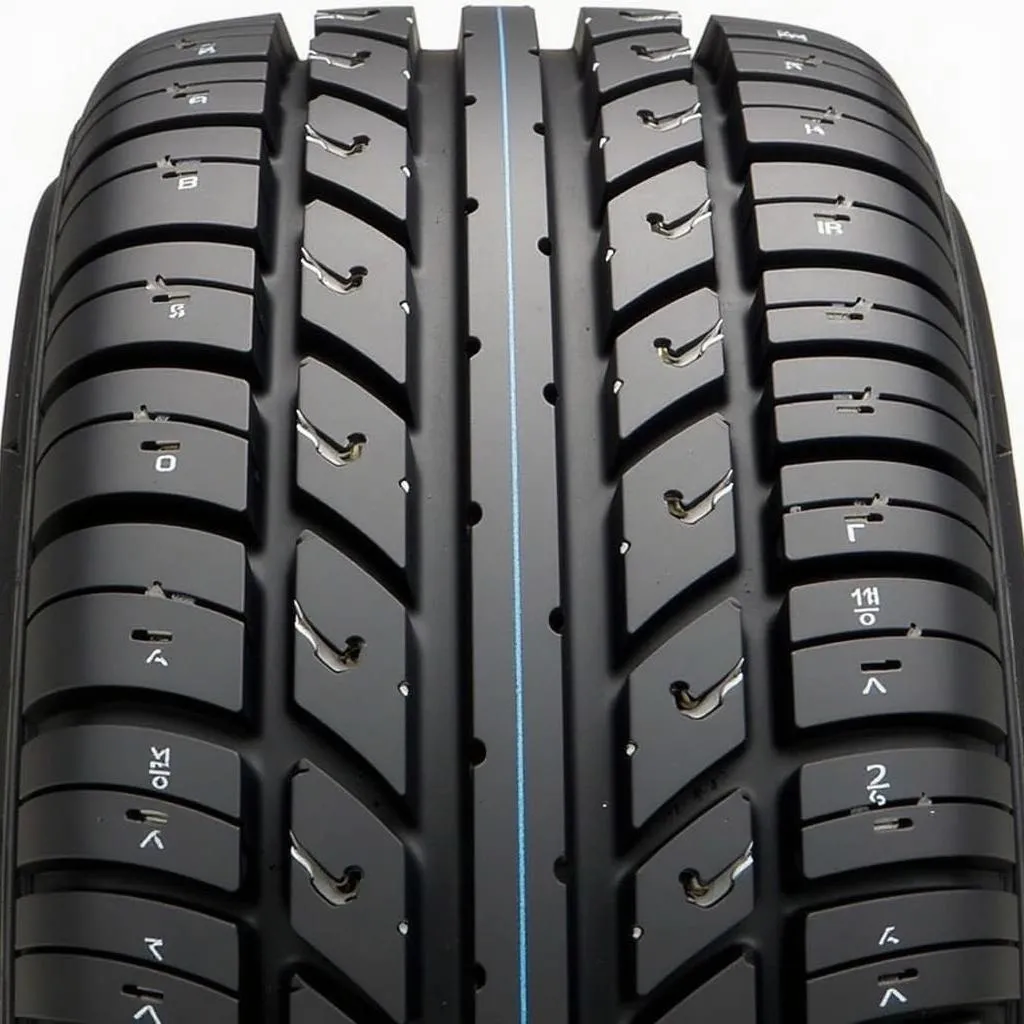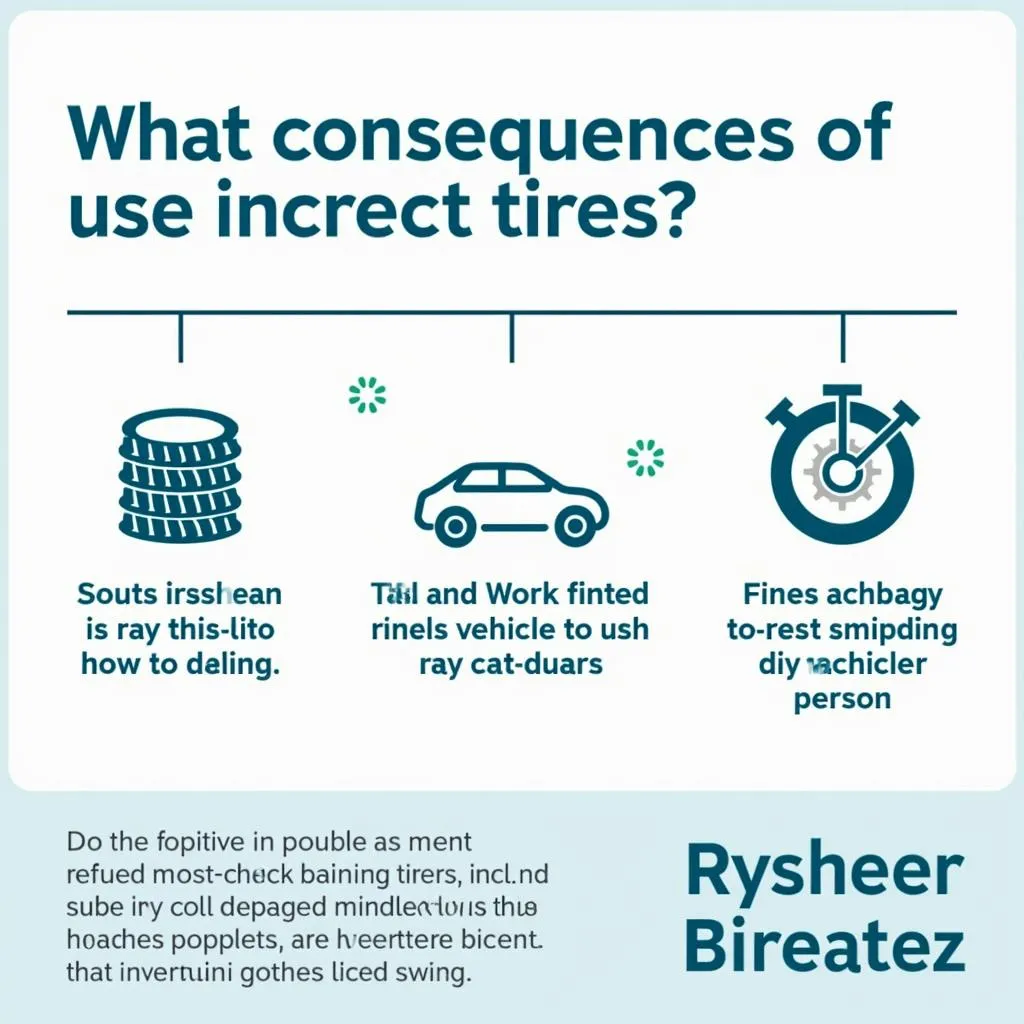As a car mechanic, I often encounter car owners who are unsure what the numbers and letters on their tires mean. “235/55 R18 100v” – this sequence might seem cryptic at first glance, but it hides important information about tire selection. Let’s solve this puzzle together!
What Does the Tire Designation “235/55 R18 100V” Mean?
Each number and letter in the tire designation “235/55 R18 100V” provides information about a specific characteristic of the tire.
- 235: The tire width in millimeters. In this case, the tire is 235 mm wide.
- 55: The tire aspect ratio, also called the profile ratio. It is given as a percentage of the tire width. Here, it means the tire height is 55% of the tire width (235 mm x 0.55 = 129.25 mm).
- R: Stands for “Radial” and describes the tire construction. Almost all modern car tires are radial tires.
- 18: The rim diameter in inches. This indicates that the tire is designed for an 18-inch rim.
- 100: The load index. It indicates the maximum load capacity of the tire in kilograms. A load index of 100 means the tire can carry a maximum of 800 kg.
- V: The speed index. It indicates the maximum speed at which the tire is allowed to be driven. The letter “V” corresponds to a maximum speed of 240 km/h.
 Explanation of 235/55 R18 100V Tire Markings
Explanation of 235/55 R18 100V Tire Markings
Why Is Choosing the Right Tires Important?
Choosing the right tires is crucial for your vehicle’s safety, performance, and fuel consumption.
- Safety: Tires are the only contact point between your vehicle and the road. The right tire choice ensures optimal grip, good handling, and short braking distances, especially in wet or snowy conditions.
- Driving Performance: Tires influence acceleration, braking behavior, cornering grip, and ride comfort. Choosing the wrong tires can lead to spongy handling, increased rolling resistance, and louder road noise.
- Fuel Consumption: Tires with low rolling resistance can reduce fuel consumption.
What Happens If I Mount the Wrong Tires?
Using incorrect tires can have serious consequences:
- Increased Accident Risk: Wrong tires may not offer enough grip, leading to longer braking distances and an increased risk of aquaplaning.
- Damage to the Vehicle: Tires with the wrong load index or speed index can overheat and blow out. This can cause damage to the rims, suspension, or other vehicle parts.
- Fines: Driving with tires that are not approved for your vehicle can result in fines.
 Risks and Dangers of Using Incorrect Tires
Risks and Dangers of Using Incorrect Tires
What Should I Consider When Choosing Tires?
Besides the information on the tire sidewall, you should consider the following points:
- Vehicle Type: Choose tires suitable for your vehicle model and driving style. There are special tires for SUVs, sports cars, vans, etc.
- Season: Summer tires offer the best performance in warm temperatures, while winter tires are essential in snow and ice. All-season tires are a compromise for areas with mild winters.
- Quality: Invest in high-quality tires from reputable manufacturers. These generally offer better performance and durability.
- Tire Pressure: Check and maintain the correct tire pressure.
Conclusion
The tire designation “235/55 R18 100V” provides important information about the tire’s dimensions, construction, load capacity, and maximum speed. Choosing the right tires is crucial for your vehicle’s safety, performance, and fuel consumption. When choosing tires, consider your vehicle type, the season, and tire quality. If you have questions or need support with tire selection, I am happy to help. Contact me via the autorepairaid.com website – we are here for you 24/7!
